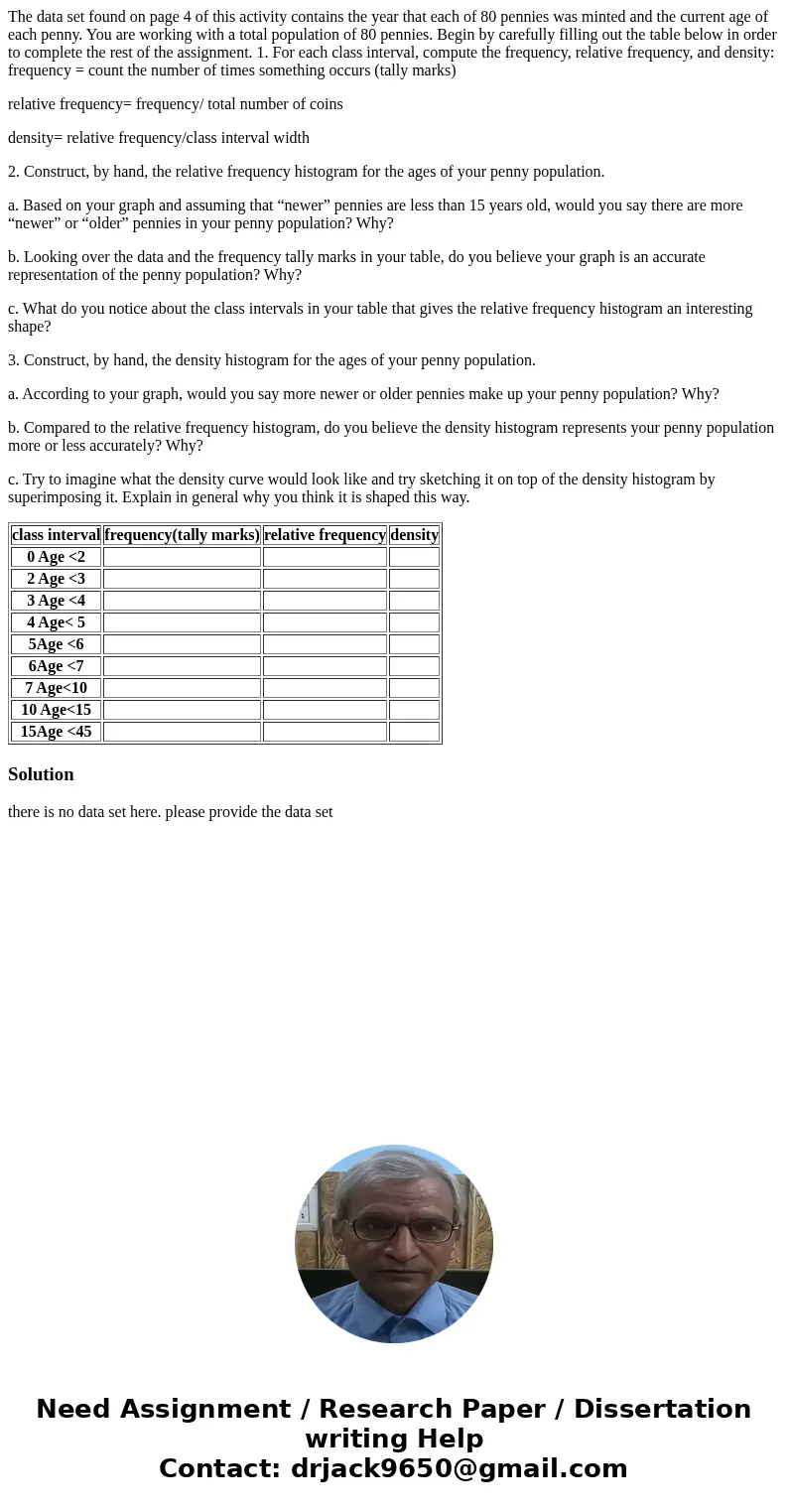The data set found on page 4 of this activity contains the y
The data set found on page 4 of this activity contains the year that each of 80 pennies was minted and the current age of each penny. You are working with a total population of 80 pennies. Begin by carefully filling out the table below in order to complete the rest of the assignment. 1. For each class interval, compute the frequency, relative frequency, and density: frequency = count the number of times something occurs (tally marks)
relative frequency= frequency/ total number of coins
density= relative frequency/class interval width
2. Construct, by hand, the relative frequency histogram for the ages of your penny population.
a. Based on your graph and assuming that “newer” pennies are less than 15 years old, would you say there are more “newer” or “older” pennies in your penny population? Why?
b. Looking over the data and the frequency tally marks in your table, do you believe your graph is an accurate representation of the penny population? Why?
c. What do you notice about the class intervals in your table that gives the relative frequency histogram an interesting shape?
3. Construct, by hand, the density histogram for the ages of your penny population.
a. According to your graph, would you say more newer or older pennies make up your penny population? Why?
b. Compared to the relative frequency histogram, do you believe the density histogram represents your penny population more or less accurately? Why?
c. Try to imagine what the density curve would look like and try sketching it on top of the density histogram by superimposing it. Explain in general why you think it is shaped this way.
| class interval | frequency(tally marks) | relative frequency | density |
|---|---|---|---|
| 0 Age <2 | |||
| 2 Age <3 | |||
| 3 Age <4 | |||
| 4 Age< 5 | |||
| 5Age <6 | |||
| 6Age <7 | |||
| 7 Age<10 | |||
| 10 Age<15 | |||
| 15Age <45 |
Solution
there is no data set here. please provide the data set

 Homework Sourse
Homework Sourse